Rhinoplasty in Ho Chi Minh City
Search and Compare the Best Clinics and Doctors at the Lowest Prices for Rhinoplasty in Ho Chi Minh City
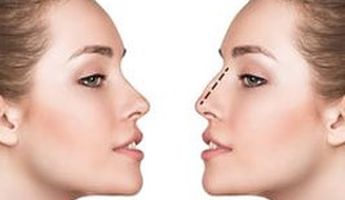
Find the best clinics for Rhinoplasty in Ho Chi Minh City
With Medijump you can browse 6 facilities offering Rhinoplasty procedures in Ho Chi Minh City. The cheapest price available is $1,500 in Ho Chi Minh City. And for the cheapest price globally, prices start from $101 in Poland.
Rhinoplasty in Vietnam
Price: $ 1,500
Rhinoplasty in Ho Chi Minh City
Price: $ 1,500
Poland offers the best prices Worldwide
Price: $ 101
Home Clinic, located in District 5, Ho Chi Minh City, Vietnam offers patients Rhinoplasty procedures among its total of 18 available procedures, across 4 different specialties. The cost of a Rhinoplasty procedure ranges from $2,000 to $3,000, whilst the national average price is approximately $1,750. All procedures and treatments are undertaken by just a small team of specialists, with 2 in total at the Clinic, and they are not accredited by any recognized accreditations institutes
From 1 verified reviews
kim phung Le, 26 February 2020
I had porcelain teeth 1 month ago and feel very satisfied with the treatment results.Customer service is also very good.The doctors work very hard, the nurses are very gentle and take care of the patients.
From 15 verified reviews
Trung Hoang, 21 September 2019
The eyelid nose in GNG is very full, the height is high enough so it looks very natural
Natural Aesthetics Plastic Surgery, located in District 10, Ho Chi Minh City, Vietnam offers patients Rhinoplasty procedures among its total of 14 available procedures, across 3 different specialties. The cost of a Rhinoplasty procedure ranges from $1,500 to $3,000, whilst the national average price is approximately $1,750. All procedures and treatments are undertaken by just a small team of specialists, with 2 in total at the Hospital, and they are accredited by ISQua - The International Society for Quality in Health Care
Dr Nhan Ho Aesthetic and Plastic Surgery, located in District 5, Ho Chi Minh City, Vietnam offers patients Rhinoplasty procedures among its total of 14 available procedures, across 2 different specialties. The cost of a Rhinoplasty procedure ranges from $1,500 to $3,000, whilst the national average price is approximately $1,750. There are many specialists available at the Clinic, with 12 in total, and they are not accredited by any recognized accreditations institutes
Dr Nguyen, located in Binh Chanh, Ho Chi Minh City, Vietnam offers patients Rhinoplasty procedures among its total of 2 available procedures, across 1 different specialties. Currently, there's no pricing information for Rhinoplasty procedures at Dr Nguyen, as all prices are available on request only, whilst the national average price is approximately $1,750. All procedures and treatments are undertaken by the lead specialist at the Hospital, and they are not accredited by any recognized accreditations institutes
Compare Before & After Photos of _procedure_photos.phpRhinoplasty
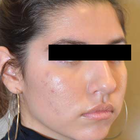

Half-side view


Front view

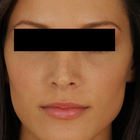
Front view
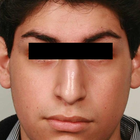
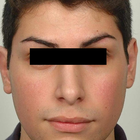
Front view
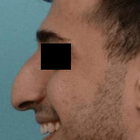

Full-side view
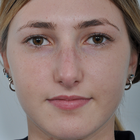
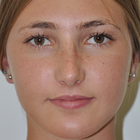
Front view

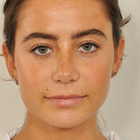
Front view

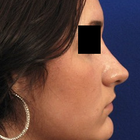
Full-side view
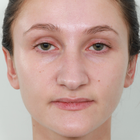
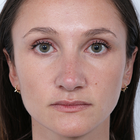
Front view
WHY US?
At Medijump, we're making medical easy. You can search, compare, discuss, and book your medical all in one place. We open the door to the best medical providers worldwide, saving you time and energy along the way, and it's all for FREE, no hidden fees, and no price markups guaranteed. So what are you waiting for?

Free

Best Price

Widest Selection

Risk-Free
What you need to know about Rhinoplasty in Ho Chi Minh City

Rhinoplasty, commonly known as the “nose job,” is plastic surgery to change the shape of the nose and to improve its function. This procedure can be performed for medical and cosmetic reasons. Those with breathing problems caused by a birth defect, deviated septum, sinusitis, or an injury to the nose, as well as those who are not happy with the appearance of their nose, can undergo rhinoplasty.
Rhinoplasty has a number of benefits. However, the most compelling reason for patients to have this surgery is to improve the appearance of their noses, which can boost their self-esteem significantly. Besides altering the form and size of your nose, the procedure can also strengthen the bridge, narrow the nostrils, and reshape the tip.
While anyone can undergo rhinoplasty, teenagers are advised to wait until their nose has reached its adult size.
What does a Rhinoplasty Procedure Involve?
During rhinoplasty, you will be given local or general anesthesia to make sure that you are comfortable and you don't feel any pain. Your surgeon might perform the procedure inside your nose or through an incision at the base of your nose.
Changing the shape of your nasal bones or cartilage can be done in several ways, depending on how much needs to be added or removed, available materials, and your nose’s structure.
If your nose needs to be augmented because you want to increase its size, prosthetic implants or cartilage from your nasal septum or ear is used. Once your surgeon is done altering the shape of your nose and correcting any defect, they will place the nose’s skin and tissue back, then close the incisions with stitches.
How Long Should I Stay in Ho Chi Minh City for a Rhinoplasty Procedure?
Depending on the complexity of the procedure and the type of anesthesia used, you may be able to leave the hospital on the same day or stay in the hospital for a day or two. The surgery itself takes around 1.5 to 3 hours to complete. Once you are discharged from the hospital, you should not leave Ho Chi Minh City right away. Instead, plan to stay about 10 to 14 days for initial recovery and follow-up checkups. A week following the surgery, your surgeon will remove your stitches.
What's the Recovery Time for Rhinoplasty Procedures in Ho Chi Minh City?
You generally need to wait at least 2 to 3 weeks until you can resume most of your normal activities. However, you should not perform any strenuous activities, such as intense exercise, for about 3 to 6 weeks. During the first few days after the surgery, you will experience some swelling around your eyes, but these will subside within 3 to 14 days. You will also have to wear a nasal splint for about a week following the surgery.
What sort of Aftercare is Required for Rhinoplasty Procedures in Ho Chi Minh City?
Since you may experience some discomfort, your surgeon will give you painkillers to ease any pain and discomfort. Make sure to take the pain medication as prescribed. For a couple of weeks following the surgery, you should not blow your nose, as well as laughing or talking too much. You also need to avoid any clothes that need to be pulled over your head and glasses on your nose for a few weeks. Always make sure to cover your nose while going out in the sun during your recovery period.
It's important that you avoid bumping or hitting your nose, and keep your nose safe and protected from anything that could misalign the bones and undo the results. To help you recover smoothly and quickly, eat healthy and nutritious food.
What's the Success Rate of Rhinoplasty Procedures in Ho Chi Minh City?
Rhinoplasty is considered one of the most complicated facial cosmetic surgeries. However, thanks to the advances in technology and surgeons’ extensive experience, the procedure has a very high success rate of between 85% and 90%.
Although rhinoplasty is generally safe, it does carry some potential risks of complications and side effects, including bleeding, infection, allergic reaction to the anesthesia, permanent numbness in your nose, difficulty breathing through the nose, an uneven-looking nose, discoloration, persisting pain, scarring, septal perforation, and a need for additional surgery.
Are there Alternatives to Rhinoplasty Procedures in Ho Chi Minh City?
If you are unable to undergo rhinoplasty, you can opt for its minimally invasive or noninvasive alternatives, such as filler injections or Botox. Both filler injections and Botox are noninvasive and require only a very short visit with your doctor. It works by injecting the substance into your nose to change its shape. Many people choose these methods because it is not as painful as rhinoplasty, requires little to no downtime, and no incision or stitches are involved.
If you want to improve your breathing, you may be recommended to use nasal strips. The nasal strip is a type of bandage with adhesive-embedded splints or plastic ribs that is applied across the bridge of the nose and the sides of the nostrils. It can keep the airway open, making breathing easier.
Whilst the information presented here has been accurately sourced and verified by a medical professional for its accuracy, it is still advised to consult with your doctor before pursuing a medical treatment at one of the listed medical providers
No Time?
Tell us what you're looking for and we'll reachout to the top clinics all at once
Enquire Now

Popular Procedures in Ho Chi Minh City
Prices Start From $404

Prices Start From $1,945

Prices Start From $192

Prices Start From $500

Recommended Medical Centers in Ho Chi Minh City for Rhinoplasty

- Interpreter services
- Translation service
- Religious facilities
- Medical records transfer
- Medical travel insurance
- Health insurance coordination
- TV in the room
- Safe in the room
- Phone in the room
- Private rooms for patients available

- Interpreter services
- Translation service
- Religious facilities
- Medical records transfer
- Medical travel insurance
- Health insurance coordination
- TV in the room
- Safe in the room
- Phone in the room
- Private rooms for patients available

- Interpreter services
- Translation service
- Religious facilities
- Medical records transfer
- Medical travel insurance
- Health insurance coordination
- TV in the room
- Safe in the room
- Phone in the room
- Private rooms for patients available

- Interpreter services
- Translation service
- Religious facilities
- Medical records transfer
- Medical travel insurance
- Health insurance coordination
- TV in the room
- Safe in the room
- Phone in the room
- Private rooms for patients available

- Interpreter services
- Translation service
- Religious facilities
- Medical records transfer
- Medical travel insurance
- Health insurance coordination
- TV in the room
- Safe in the room
- Phone in the room
- Private rooms for patients available

- Interpreter services
- Translation service
- Religious facilities
- Medical records transfer
- Medical travel insurance
- Health insurance coordination
- TV in the room
- Safe in the room
- Phone in the room
- Private rooms for patients available

- Interpreter services
- Translation service
- Religious facilities
- Medical records transfer
- Medical travel insurance
- Health insurance coordination
- TV in the room
- Safe in the room
- Phone in the room
- Private rooms for patients available

- Interpreter services
- Translation service
- Religious facilities
- Medical records transfer
- Medical travel insurance
- Health insurance coordination
- TV in the room
- Safe in the room
- Phone in the room
- Private rooms for patients available

- Interpreter services
- Translation service
- Religious facilities
- Medical records transfer
- Medical travel insurance
- Health insurance coordination
- TV in the room
- Safe in the room
- Phone in the room
- Private rooms for patients available

- Interpreter services
- Translation service
- Religious facilities
- Medical records transfer
- Medical travel insurance
- Health insurance coordination
- TV in the room
- Safe in the room
- Phone in the room
- Private rooms for patients available
Rhinoplasty in and around Ho Chi Minh City
About Ho Chi Minh
Ho Chi Minh City also referred to by its former name of Saigon, is Vietnam’s largest city. Although it is busy and chaotic, the city is actually teeming with wonderful shops, intriguing history, delicious food, and fantastic nightlife. While many people normally come to the city to explore its temples and museums, there’s also a growing trend of medical tourism. More and more people are coming to the city to take advantage of healthcare. One of the main reasons behind Ho Chi Minh’s emerging popularity in medical tourism is affordable prices. It’s more affordable to have any treatment performed here than in Thailand and Singapore.
Popular Parts of Ho Chi Minh
There are 19 districts in Ho Chi Minh, but the most popular one is District 1 (also known as Saigon District), which serves as the city center. Here, visitors can find bars, restaurants, cafés, and iconic landmarks. Some of the most popular attractions in this district are the Bitexco Tower Skydeck, the Independence Palace, the Notre Dame Cathedral and Post Office, Bui Vien Street, and Nguyen Hue Walking Street. Besides District 1, Chinatown or Cholon is also very popular as it is home to the biggest Chinese community in this country, and Binh Tay Market is its main draw. Full of great food, history, and wonderful sights, this area is an excellent place to wander around and have fun.
Transport in Ho Chi Minh
The main gateway to Ho Chi Minh is the Tân Sơn Nhất International Airport, which is the busiest airport in Vietnam. It serves flights to and from numerous cities in Asia, including Bangkok, Singapore, and Seoul. There are also several low-cost airlines available for budget travelers, such as VietJet Air and Jetstar Pacific Airlines. To get around the city, buses, taxis, Xe Om (motorcycle taxis), Cyclos, and Grab Taxi (similar to Uber) are available. Buses are comfortable, but taxis and Grab Taxi are the easiest way to travel around. Xe Om and Cyclos are affordable, but they tend to be suitable for short-distance trips only.
Visas in Ho Chi Minh
Vietnam allows citizens of 24 countries, including the UK, Denmark, and Cambodia, to enter and stay in the country for up to 90 days without a visa. Other nationalities need to apply for a visa. The country has an electronic visa system available for citizens of 81 countries.
Weather in Ho Chi Minh
Ho Chi Minh has a tropical monsoon climate and the average temperatures remain all year round. December to March is the dry season, with the temperatures ranging from 21°C to 34°C. May to September is the wet season, which experiences frequent rain showers. July to November is the peak period for typhoons.
Additional Info
- Local Currency: The official currency is the Vietnamese Dong (VND). 1 USD is equivalent to 23,270 VND.
- Money & Payments: ATMs are widespread. Credit cards are accepted at most hotels, but always bring cash with you. Tipping is appreciated, but not expected.
- Local Language: The official language is Vietnamese. English is widely spoken, particularly in tourist areas.
- Local Culture and Religion: The constitution provides for freedom of worship. Vietnamese folk religion is a major religion, but many people are not religious. Other religions, such as Buddhism and Christianity, are freely practiced.
- Public Holidays: New Year’s Day, Tet Holiday, Reunification Day, International Labor Day, and National Day are some of the most celebrated holidays in Ho Chi Minh.
Popular Searches
- Plastic Surgery in Thailand
- Dental Implants in Thailand
- Hair Transplant in Thailand
- Breast Augmentation Thailand
- Gastric Sleeve in Thailand
- Gender Reassignment Surgery in Thailand
- Laser Hair Removal in Bangkok
- Botox in Bangkok
- Dermatology in Bangkok
- Breast Augmentation in Bangkok
- Coolsculpting in Bangkok
- Veneers in Turkey
- Hair Transplant in Turkey
- Rhinoplasty in Turkey
- Stem Cell Therapy in Mexico
- Rhinoplasty in Mexico
- Liposuction in Mexico
- Coolsculpting in Tijuana
- Rhinoplasty in Korea
- Scar Removal in Korea
- Gastric Sleeve in Turkey
- Bone Marrow Transplant in India
- Invisalign in Malaysia
- Plastic Surgery in the Dominican Republic
- Tummy Tuck in the Dominican Republic
- Plastic and Cosmetic Surgery in Poland
- Rhinoplasty in Poland
- Hair Implant in Poland
- Dental Implants in Poland
- IVF in Turkey





